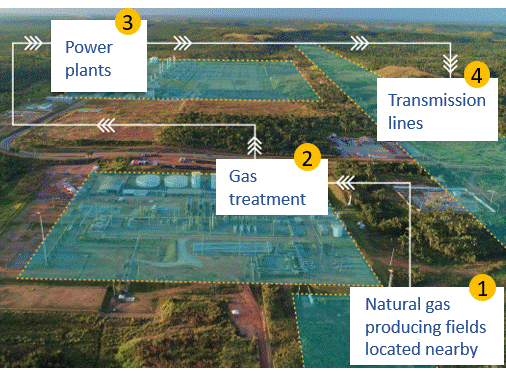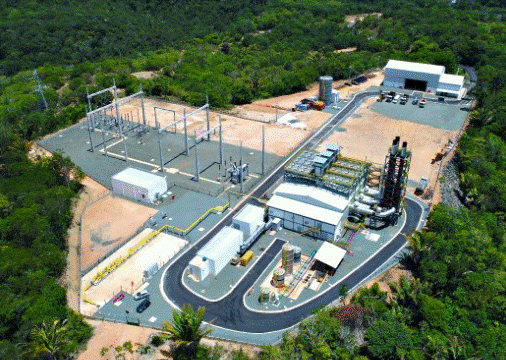NATURAL GAS TO WIRE IN BRAZIL
December 8, 2023

In the Gas-to-Wire (GTW) or Reservoir-to-Wire (R2W) model in Brazil, electricity is generated close to onshore natural gas-producing fields. The Gas is extracted, treated, and used as fuel for generating electricity. The Gas is transformed into electricity by thermal plants, and then electricity is supplied to the National Interconnected System.
In 2019, renewable sources composed 85% of the Brazilian electric matrix. Hydropower was the leading source of total annual renewable electricity generation in the country. Hydro, biomass, wind, and solar accounted for 65%, 9%, 8%, and 1% respectively. Out of the fossil sources, the Natural gas, of the Brazilian electric matrix was responsible for only 9%1.
The source of hydroelectric power is water. A Hydroelectric power plant has a reservoir created by a dam on a river to alter the natural flow of water. Water collects in the reservoir and is released through a hydro turbine. The energy of flowing water turns the turbine's blades, which in turn rotates a metal shaft in a generator to produce electricity. Then electricity is fed into the electrical grid. The energy available to spin the turbine depends not only on the elevation change but also on the volume of the water flow.
Factors that make GTW projects attractive to investors:1

A range of challenges limited the use and expansion of hydropower. Possible variations in climatic conditions, in drainage basins, change the water levels leading to a decrease in the supply of electricity. The complexity of obtaining environmental licenses—The Brazilian Amazon region has discouraged the installation of hydropower plants.
The production of electricity by the sugar-energy and cellulose sectors have increased the share of biomass, significantly, in the electric matrix. However, the trend depends on the increase in the production of industrial products—sugar, ethanol, and cellulose.
Photovoltaic solar increased its share due to the drop in generation costs. However, wind power has faced a few obstacles—wind power generation potential is concentrated the Northeast and southern parts of the country, and high implementation costs.
Competitiveness of the cost of electricity production from natural gas.
Steam-based power generation plants need water mainly for cooling. However, they do not consume all the water supplied, a high percentage of the water is reused by the plants.
Thermoelectric power plants boil water to produce steam. A fuel source—natural gas, coal, or nuclear material is used to boil water. The power plants use freshwater primarily for cooling the steam back into liquid. However, freshwater use can be reduced—through the use of advanced cooling technologies and alternative water sources2.
References:
- Souza L, Santos R, Miranda D. Gas to Wire (GTW) Model in Brazil: Challenges and Possibilities. Int J Petrol Technol. 2022; 9: 67-79. DOI – https://doi.org/10.15377/2409-787X.2022.09.8
- United States Government Accountability Office. 2009. Energy and Water: Preliminary Observations on the Links between Water and Biofuels and Electricity Production. https://www.gao.gov/assets/gao-09-862t.pdf
